David Moody's Blog, page 69
April 5, 2014
The Battery
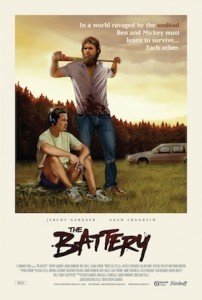 Regular visitors here will recall how, a couple of weeks back, I was banging on about concept versus story and my argument boiled down to this: it’s all well and good having a great idea, but without a story which matters to people, your book or film will most likely go unread/unwatched/unloved.
Regular visitors here will recall how, a couple of weeks back, I was banging on about concept versus story and my argument boiled down to this: it’s all well and good having a great idea, but without a story which matters to people, your book or film will most likely go unread/unwatched/unloved.
Today’s Post-Apocalyptic Movie Club selection is a fantastic example of how that holds true – a movie with a deceptively slight concept which is carried by an excellent story and performances.
THE BATTERY is a lo-fi zombie movie. In fact, it’s one of the lowest lo-fi movies I think I’ve ever seen. It has a very small cast, a distinct lack of action, and yet I was captivated through the entire one hundred and one minutes. Here’s the synopsis and trailer. Click the link below for my thoughts.
Two former baseball players, Ben (Jeremy Gardner) and Mickey (Adam Cronheim), cut an aimless path across a desolate New England. They stick to the back roads and forests to steer clear of the shambling corpses that patrol the once bustling cities and towns. In order to survive, they must overcome the stark differences in each other’s personalities—Ben embraces an increasingly feral, lawless, and nomadic lifestyle—while Mickey is unable to accept the harsh realities of the new world. Mickey refuses to engage in Ben’s violent games and longs for the creature comforts he once took for granted. A bed, a girl, and a safe place to live.
When the men intercept a radio transmission from a seemingly thriving, protected community, Mickey will stop at nothing to find it, even though it is made perfectly clear that he is not welcome.
THE BATTERY opens abruptly with Mickey (Adam Cronheim) sitting on the steps of a house, changing the batteries of one of those portable CD players we all thought were so cool in the early nineties. A while later, Ben (Jeremy Gardner, who also wrote and directed the film) emerges from the house at a frantic speed, shooting wildly at something inside.
In the space of a two minute single take scene, pretty much everything you need to know about the movie has been established with astonishing effectiveness.
The film is deliberately vague about what’s happened to the world, and that works in its favour. It’s clear that society has fallen to the living dead, but rather than go for all the usual tropes, Gardner steers THE BATTERY in the opposite direction, revealing less, not more. We see a few empty houses and Mickey and Ben come across a handful of cadavers, but it’s what we don’t see that builds the atmosphere and conveys the emptiness… the space, the endless walking, the directionless journey, the lack of distractions, the relative blandness of the few zombies we come across…
Mickey and Ben are excellent characters. They’re both survivors, and they both played baseball, and to an extent that’s where their similarities end. They’re together because they have to be together, and much of the film’s drama, comedy and emotion comes from their interactions with each other. Friction arises when they’re pulled in opposite directions following contact with a group of survivors, and the ramifications of the choices they make are heartbreaking.
It would be wrong of me to say anything more about the film, I’d just recommend you check it out at your earliest opportunity. Made (incredibly) on a budget of just $6000, it’s a brilliant little movie.
US readers can get hold of the film on DVD and VOD now (click here), and I’ll look for release dates for other countries and update here as I find them. In the meantime, the movie’s official site is watch.thebatterymovie.com, and you can also find THE BATTERY on Facebook and Twitter.
The Battery is a post from: David Moody - author of the HATER and AUTUMN books
The post The Battery appeared first on David Moody - author of the HATER and AUTUMN books.






April 3, 2014
Location Inspiration
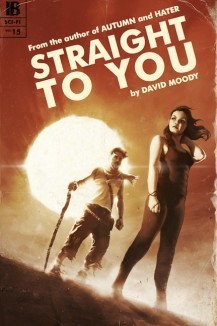 I guess I could file this post under the ‘What Works For Me’ heading, but it should also be of interest to those of you who are here more for reading than writing, in particular those who’ve already read STRAIGHT TO YOU.
I guess I could file this post under the ‘What Works For Me’ heading, but it should also be of interest to those of you who are here more for reading than writing, in particular those who’ve already read STRAIGHT TO YOU.
WARNING – MILD STRAIGHT TO YOU SPOILERS AHEAD!
I wanted to talk about locations today: how rather than finding the right scenery to fit your story, sometimes the story can be shaped by a location or, in this case, a journey. If you’ve not read STRAIGHT TO YOU yet, why not grab a low price ebook or signed paperback then come back and see how some of the scenes in the new version of the story came about.
I’ve already spoken at length about how I wanted the rewritten version of STRAIGHT TO YOU to feel more honest and emotional in comparison to the hopelessly naïve original, and I decided early on in the planning process that in order for that to happen I’d need to give the book a foothold in reality.
Here’s me pictured in the idyllic Welsh village of Criccieth last Sunday, and in the background you can see the castle which features prominently in the book. Click the link below to find out more, but please be warned – there are potentially some spoilers ahead.

My first few novels took place in almost entirely fictitious locations: places which, although often inspired in part by the real world, had been liberally adapted to suit the situation – given new names, huge liberties taken with the geography etc. It was very much a case of story first, locations later, and that worked to an extent (have a look at these AUTUMN retrospective pieces from a couple of years back to find out more). Things changed when I came to write THEM OR US, the final HATER novel. Though the locations for the first two books had been quite vague, I found myself thinking if I was Danny McCoyne and I’d been through what he’d been through, where would I go? The answer was Lowestoft – the most easterly point in the UK, well away from the chaos unleashed at the end of DOG BLOOD. Here’s a post I wrote about the decision to set the book in Lowestoft, accompanied by some great post-apocalyptic artwork by David Naughton-Shires.
STRAIGHT TO YOU was always going to be different, because the bulk of the story is a journey… a pre- and post-apocalyptic road-trip. As I began to plan the re-write, I found myself poring over maps, trying to work out Steven Johnson’s route as well as the revised plot of the book.

This weekend just gone I was at the SciFi Weekender in Pwllheli, North Wales (and an excellent time was had by all – thanks to everyone who turned out). It was when I was making the same trip last year that I realised I’d stumbled on the ideal setting for STRAIGHT TO YOU. I drove from my home in Birmingham to Pwllheli via Shrewsbury – a cross-country journey I’ve done many, many times before, through some absolutely stunning scenery, to places where I’d been on many holidays as a child and where I’d later taken my own family. Making this connection between my own life and Steven Johnson’s journey added an unexpected extra layer of emotional attachment. In particular the village of Criccieth, just a few miles from Pwllheli, is a place I’ve known and loved for a long, long time and I knew it, and its castle, would make the perfect location for the novel’s climactic scenes.
I realised, though, that Steven’s journey in STRAIGHT TO YOU wouldn’t be gruelling enough if he only had to cover the 130 miles or so between Birmingham and Criccieth. He needed to be on the road and suffering for far longer(!), so I made Birmingham the mid-point and went back almost as far as Lowestoft in the opposite direction. I eventually settled on having Steven and Sam living in Cambridge, giving Steven around 260 miles in total to travel – a drive which would probably take about six hours on a good day (and if you’ve read the book, you’ll know that Steven’s days on the road are far from good days…!).
Now here’s the bit I found really interesting. I’d got the beginning and end of Steven’s journey in the book all mapped out, but I needed to know what exactly happened to him between Cambridge and Criccieth. In the original novel it was just a matter of him dealing with odd problems as they arose – traffic queues, car breakdowns etc., but transplanting the action to the real world and following the route immediately gave rise to a number of questions and potential situations. It allowed me to use the places I knew he’d reach along the way to better show how the world was falling apart.
First, have you ever driven from Cambridge to Birmingham along the A47 and M6? Jeez, it’s dull. Really, really dull. It’s long, relatively straight, and boring as hell. I do it regularly, and it’s hard going at the best of times. So what about at the worst of times? I tried to imagine covering around a hundred miles of grey tarmac at barely any speed, bumper to bumper, in unimaginable heat… It doesn’t bear thinking about.
And then I knew Steven would reach Birmingham, and I tried to imagine what post-apocalyptic Brum would be like. No jokes here please, because I know parts of my home city already resemble scenes from HATER… So given that it would inevitably be bad there (and in all other major cities, come to think of it) what would Steven do? I’m skirting around plot points from here on in, because I don’t want to spoil the book, but it made sense for him to try and bypass the city, and go cross-country.
As I recalled the route I’d driven to get to Criccieth, the second half of the story began to take shape…
You reach Lake Bala – over four miles long and a mile wide. How would this have changed after months of relentless heat?

Travelling through the Snowdonia National Park. Imagine being alone on this stretch of road when an energy pulse strikes…

You’re finally off the hills and you reach Trawsfynydd – a small and completely deserted village. And as you continue down the road, you see a shape emerge between the trees…

…a nuclear power station – no longer operational, but still frightening enough. And so it goes on… the Oakeley Arms Hotel on the road into the town of Porthmadog where a frightened couple seek shelter and take Steven in after another devastating energy wave:

Porthmadog itself; the slate mines dotted around the area which might offer some escape; the Eisteddfa campsite I stayed at as a kid and where I later took my kids; the small, odd-shaped, roadside car park on the way into Criccieth where a pivotal scene takes place…
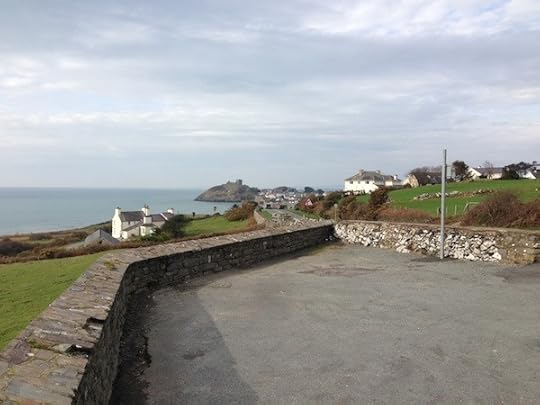
…wholly unexpectedly, all these places inspired different parts of the story and helped shape STRAIGHT TO YOU, giving it that real world basis I’d been looking for.
So there you go. I hope that this brief guided tour was of interest! To finish, I think it’s worth reiterating the point of this post from a writing perspective: sometimes you have your story all mapped out and you adapt your locations to suit, other times the locations help dictate the story. I found it fascinating how, with STRAIGHT TO YOU, actually going on Steven’s journey myself helped shape the novel into something far more satisfying than the original book.
STRAIGHT TO YOU is available in print or as a low price ebook. You can buy signed copies direct from www.infectedbooks.co.uk.
Location Inspiration is a post from: David Moody - author of the HATER and AUTUMN books
The post Location Inspiration appeared first on David Moody - author of the HATER and AUTUMN books.






March 26, 2014
What Works for Me – Concept Versus Story
Here’s another in my irregular series of posts about writing and publishing. As always, feel free to completely ignore everything that follows because as the title implies, this is just what works for me. Today I wanted to talk about something which I didn’t think about enough when I started out, but which makes an immeasurable difference to any creative project.
Ever put down a book or walked out of a cinema and felt disappointed because what you just read or watched didn’t live up to your expectations? Maybe it sounded like a good idea, but the author/film-maker’s execution of that idea left you wanting? When I started writing, dumb as this might sound now, I don’t think I fully appreciated the difference between a story and a concept.
You’ll hopefully have noticed a couple of recent film recommendations here (well, one recommendation and the other a less than enthusiastic write-up). On Saturday I wrote about ESCAPE FROM NEW YORK and on Monday just gone, THE PURGE. It struck me when I sat down and watched these two movies in quick succession that there’s a commonality between them I hadn’t appreciated before: they both deal with variations of the same basic concept, but take them in wildly different directions and with varying degrees of success.
Both films start with a similar premise – crime rates in the USA have exploded, and the authorities have been forced to take radical steps to try and bring things under control. In ESCAPE, Manhattan Island has become a maximum security prison, walled off from the rest of the country, once you’re in you don’t get back out. In THE PURGE, all crime is legalised for a single twelve hour period each year. So far, so good… both approaches sound like decent starting points for dystopian movies (provided you don’t think about the practicalities of either ‘solution’ for too long). So why is ESCAPE hailed (by me) as a classic and THE PURGE hailed (again by me) as a misfire? Well, I could write for hours about the relative merits of both films, but I think much of it boils down to concept versus story. ESCAPE starts with a cool concept which it explores through the use of interesting characters and an engrossing story. THE PURGE doesn’t.
I know I’m being unfair and overly simplistic here and there’s more to THE PURGE than I’m letting on, but I think it’s an important distinction to make: a good concept alone does not an interesting book or film make.
As I said at the beginning, when I started writing, I didn’t fully appreciate the importance of this differentiation, and until I did understand, I didn’t get anything decent written.
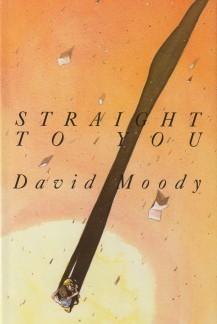

Take STRAIGHT TO YOU, for example. It’s corny, I know, but the end of the book came to me in a dream, and from that ending I was able to work out the basic conceit: the sun’s dying, the planet is heating up by the hour, and it won’t be long before it becomes uninhabitable. That’s the concept in a nutshell. Roll the clock back twenty years to when I started writing the original version of the book, and I crowbarred a number of implausible characters into a series of equally implausible situations to get from A to B. And whilst I managed to finish the book and a few people enjoyed it, as time went on and I looked back at the novel again, to me it felt deeply unsatisfying. The plot was underwhelming, serving only to get the reader from the prologue to that ending I’d dreamed.
When it came to rewriting the novel last year, I better understood the difference between concept and story. The book wasn’t about the death of the sun at all, I realised, it was about Steven Johnson and his wife Sam: how their relationship had broken down following the loss of their unborn child, and how Steven’s inability to come to terms with his feelings had driven a wedge between them.
Steven and Sam became the true focus of the novel (i.e. the story) with the death of the sun (the concept) taking place in the background, driving events forward and giving Steven a deadline (the end of the world) for making things right. Does that make sense?
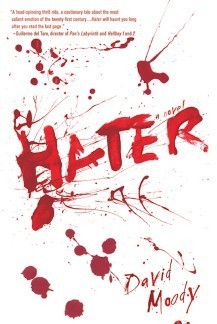 Again, with HATER: the concept is that for an undisclosed (and wholly unimportant) reason, a third of the population has turned against the other two thirds, and those people are driven, through fear and hate, to wipe out the ‘unchanged’. The story, however, is all Danny McCoyne – how events affect him and his family, and what he’s forced to do to survive and to find his place in the new world (dis)order.
Again, with HATER: the concept is that for an undisclosed (and wholly unimportant) reason, a third of the population has turned against the other two thirds, and those people are driven, through fear and hate, to wipe out the ‘unchanged’. The story, however, is all Danny McCoyne – how events affect him and his family, and what he’s forced to do to survive and to find his place in the new world (dis)order.
You’re probably reading this thinking patronising b*stard… we know this already, and that’s great if you do. But I don’t think everyone does. Here’s a friendly word of warning: if you’re planning to write the next great zombie novel (and it seems just about everyone is these days), then throwing a handful of elements (such as a devastating pandemic, the reanimation of the dead, and a merry band of the usual characters finding increasingly gruesome ways to cull the dead) into the mix just isn’t going to cut it. You’re going to need much more than that if you want to find an audience and hold their attention. Why are your characters doing what they’re doing? Why are they sticking together/falling apart? What are they hoping to achieve? What’s in it for them? Why do they care? Why should we care?
Use your story to sell your concept, don’t ever use a concept to try and tell a story. That’s what works for me.
What Works for Me – Concept Versus Story is a post from: David Moody - author of the HATER and AUTUMN books
The post What Works for Me – Concept Versus Story appeared first on David Moody - author of the HATER and AUTUMN books.






March 24, 2014
The Purge
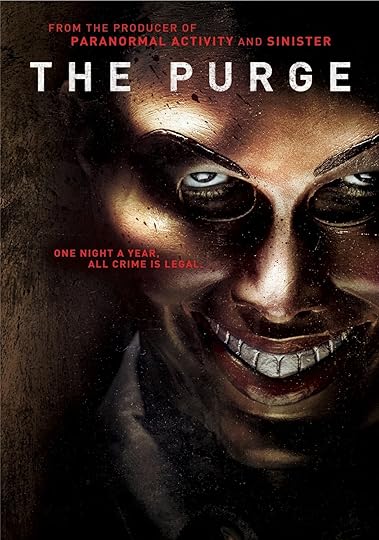 On Saturday I wrote a piece about ESCAPE FROM NEW YORK, and it was clear from the number of comments, re-tweets etc. I received that it’s a film a lot of people have a lot of love for. The movie I want to talk about today, however, is, in my opinion, far less satisfying.
On Saturday I wrote a piece about ESCAPE FROM NEW YORK, and it was clear from the number of comments, re-tweets etc. I received that it’s a film a lot of people have a lot of love for. The movie I want to talk about today, however, is, in my opinion, far less satisfying.
James DeMonaco’s 2013 movie THE PURGE starts with a broadly similar premise to EFNY, in that in order to try and cope with a crime rate that’s spiralled out of control, the US government is forced to try a radical new approach. This is the titular Purge – a brief period of time once each year when all criminal activity is legalised. Read the synopsis, watch the trailer, then follow the link for my brief thoughts.
In an America wracked by crime and overcrowded prisons, the government has sanctioned an annual 12-hour period in which any and all criminal activity-including murder-becomes legal. The police can’t be called. Hospitals suspend help. It’s one night when the citizenry regulates itself without thought of punishment. On this night plagued by violence and an epidemic of crime, one family wrestles with the decision of who they will become when a stranger comes knocking. When an intruder breaks into James Sandin’s (Ethan Hawke) gated community during the yearly lockdown, he begins a sequence of events that threatens to tear a family apart. Now, it is up to James, his wife, Mary (Lena Headey), and their kids to make it through the night without turning into the monsters from whom they hide.
I’ll say from the outset, I’m definitely not a fan of The Purge. I’d had the film recommended by various folks and as far-fetched as it is, I was initially intrigued by the concept (seriously, though, the longer you think about it, the more ridiculous it becomes). But what sealed it for me is that the makers of The Purge took this concept and did very little with it. What could have been a genuinely interesting and original look at a dystopian future hiding behind a utopian veneer, becomes just another home invasion movie.
The characters are thin and predictable, the villains even more so. The attempt at social commentary, though laudable, is ham-fisted. Director DeMonaco has apparently spoken of the debt he owes to John Carpenter’s Assault on Precinct 13 and Sam Penkinpah’s Straw Dogs, and though the DNA of both movies is clearly on show here, The Purge has nothing of the impact of either of those films.
I found similarities with themes I touched on in Hater here too (something I’ll talk more about in the near future – see my footnote at the end of this piece), as lines are constantly being blurred and we’re being asked again and again, who is the monster? Is it the crowds of shadowy figures outside the family’s house intent on doing as much damage as possible during the Purge, or Sandin and his well-to-do family who’ll do whatever it takes to protect their own? Unfortunately, by the end of the movie, I really didn’t give a shit.
All this apart, it’s a very well made film, with a strong cast who generally do their very best with the material. Lena Headey, in particular, is excellent. It’s worth sticking with the movie just to watch her final scene. Priceless.
The film performed very well at the box office with a sequel – The Purge 2: Anarchy – due for release in June. I’ve included the trailer below.
So you might be wondering, if I felt so strongly about The Purge, why did I bother with this write up? Good question. Come back later this week for my next ‘What Works For Me’ article and I’ll explain.
The Purge is a post from: David Moody - author of the HATER and AUTUMN books
The post The Purge appeared first on David Moody - author of the HATER and AUTUMN books.






March 22, 2014
Escape from New York
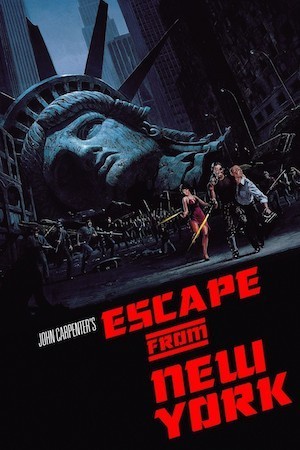 I have a habit (and I can’t decide whether it’s a good or bad habit) of neglecting everything else when I start writing a new book. I’ve been neck-deep in the first novel in the SPACES BETWEEN series for the last few weeks and haven’t been posting here as often as I’d planned. I’ll try and put that right.
I have a habit (and I can’t decide whether it’s a good or bad habit) of neglecting everything else when I start writing a new book. I’ve been neck-deep in the first novel in the SPACES BETWEEN series for the last few weeks and haven’t been posting here as often as I’d planned. I’ll try and put that right.
I’ve just re-watched a classic. A real blast from the past for this Post-Apocalyptic Movie Club selection, and for good reason. I’ll be referencing this film, and the film I’m going to talk about next, in a new ‘What Works For Me’ article, coming up shortly.
There are three directors I regularly cite as having had a huge impact on me during my formative years. In no particular order they are George Romero, David Cronenberg, and John Carpenter. Romero is self-explanatory: without him there’d be no Autumn. Cronenberg – well, he’s responsible for some of my very favourite horror movies… The Fly, Shivers, Rabid – need I go on? I was once told that he’d been passed a copy of Hater. Just the thought that Cronenberg’s held one of my books is something I still find hard to believe.
John Carpenter completes this weird holy trinity. His films are, I think, more accessible than those of Cronenberg and Romero, but not less influential. I’m a particular admirer of his golden period: from Assault on Precinct 13 in 1976, through to The Thing in 1982, and pretty much everything in between. During this time he made a series of consistently strong, often ground-breaking horror films.
Escape from New York (1981) is a cracking movie, one which I’m sure you’ve probably seen. If you haven’t, you’re in for a treat. Here’s the synopsis, followed by a trailer. Click the link below for my thoughts.
In the future (well, 1997 was the future back then!), crime in America has spiralled out of control. Surrounded by impenetrable defences, New York City is now a maximum security prison: once you go in, you don’t come out. When the President of the USA crash lands in Manhattan, Snake Plissken, a disgraced special ops soldier, is sent in. Plissken has twenty-four hours to find the president and get him out.
For me, EFNY works for a number of reasons. Firstly, it has a beautifully simple premise, and equally uncluttered execution. We’re thrown into the story from the opening scenes, and the pace barely lets up. The cast are, on the whole, superb. Kurt Russell is supremely confident as the iconic Plissken, and is ably supported by, amongst others, character actor legends Lee Van Cleef, Donald Pleasence, Harry Dean Stanton and Ernest Borgnine. Only Isaac Hayes as the Duke of New York lets the side down, failing to bring any level of menace to a character who, by default, should be the very worst of the worst. His bizarre sidekick Romero (yes, named after George, and yes, there’s a character called Cronenberg too) is ten times more terrifying.
The film inevitably feels dated and yet, to its credit, doesn’t suffer because of this. Plissken lands a glider on top of the World Trade Centre, for example, and the rudimentary computer displays, bulky watches with red LED countdowns, and the look of the police security control centre on Liberty Island are all very definitely early 1980s in their execution. But, again, you’re hooked on the strong story and rounded characters and, as such, are able to fully buy in to the film. Visually, the look of a crumbling dystopian New York (filmed in fire-ravaged parts of St. Louis) is spot on, with steam-powered cars, dilapidated buildings, and recognisable landmarks appearing in the midst of the chaos.
I love the idea of microcosms – societies existing within societies, if you like – and the prison environment of EFNY is a brilliantly executed example of such a situation. We’re never shown the normality of life in far-off 1997, but that doesn’t matter: the world within the walls of the prison is so well realised we don’t need to know what happens elsewhere, we’re happy to just assume it’s infinitely better outside Manhattan than in. If I have one criticism, it’s that the sprawling chaos of overrun NYC feels too small and confined in the film, though that undoubtedly was due to the limited budget Carpenter was working with and the technical restrictions of the day. There’s been more talk recently of a remake (a planned trilogy, I think), but I’ve little interest in watching it. I’m happy with the original, thanks very much. It knows what it is, it plays to its strengths, and it’s choc-full of attitude and atmosphere.
I’m talking about a very well known movie that’s more than thirty years old here, so I’m guessing most of you have already seen it. If not, why not? EFNY is a great way to spend ninety minutes. I’ll have a far less successful crime-related dystopian movie to talk about next time.
Escape from New York is a post from: David Moody - author of the HATER and AUTUMN books
The post Escape from New York appeared first on David Moody - author of the HATER and AUTUMN books.






March 17, 2014
SCREAM issue 23 is out now!
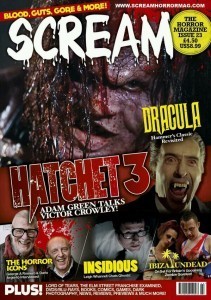 A new issue of SCREAM is always cause for celebration, and this month is no different. As well as interviews with GEORGE ROMERO and DARIO ARGENTO, there’s a great feature on the latter half of the NIGHTMARE ON ELM STREET series and a report on LORD OF TEARS (a very creepy movie I’ll be talking more about in the coming weeks). Visit www.screamhorrormag.com to get hold of a copy. If you’re in the UK, you can buy the mag from any branch of HMV.
A new issue of SCREAM is always cause for celebration, and this month is no different. As well as interviews with GEORGE ROMERO and DARIO ARGENTO, there’s a great feature on the latter half of the NIGHTMARE ON ELM STREET series and a report on LORD OF TEARS (a very creepy movie I’ll be talking more about in the coming weeks). Visit www.screamhorrormag.com to get hold of a copy. If you’re in the UK, you can buy the mag from any branch of HMV.
SCREAM issue 23 is out now! is a post from: David Moody - author of the HATER and AUTUMN books
The post SCREAM issue 23 is out now! appeared first on David Moody - author of the HATER and AUTUMN books.






March 14, 2014
Straight to You is one month old – celebratory price cuts all round!
 I’ve been bowled over with the response to the new version of STRAIGHT TO YOU. Sales have been strong, and folks have been really positive with their words. To celebrate, until March 21 you can pick up signed copies of STRAIGHT TO YOU, TRUST and AUTUMN: THE HUMAN CONDITION at a 10% discount from www.infectedbooks.co.uk. And don’t forget, complementary ebook versions are included with all those titles.
I’ve been bowled over with the response to the new version of STRAIGHT TO YOU. Sales have been strong, and folks have been really positive with their words. To celebrate, until March 21 you can pick up signed copies of STRAIGHT TO YOU, TRUST and AUTUMN: THE HUMAN CONDITION at a 10% discount from www.infectedbooks.co.uk. And don’t forget, complementary ebook versions are included with all those titles.
Alternatively, you could try and win a copy of the new book. There’s a giveaway running over at SCREAM MAGAZINE!
Straight to You is one month old – celebratory price cuts all round! is a post from: David Moody - author of the HATER and AUTUMN books
The post Straight to You is one month old – celebratory price cuts all round! appeared first on David Moody - author of the HATER and AUTUMN books.






March 13, 2014
SciFi Weekender
 I should have posted this an age ago, but didn’t. Just a very quick post to let you know I’ll be at this years SCIFI WEEKENDER at Hafan y Môr, Pwllheli, Wales (coincidentally just a couple of minutes drive from Criccieth, the setting for the climactic scenes of STRAIGHT TO YOU – come to Wales and visit the end of the world!).
I should have posted this an age ago, but didn’t. Just a very quick post to let you know I’ll be at this years SCIFI WEEKENDER at Hafan y Môr, Pwllheli, Wales (coincidentally just a couple of minutes drive from Criccieth, the setting for the climactic scenes of STRAIGHT TO YOU – come to Wales and visit the end of the world!).
The event takes place between 27 and 30 March, and you can find all the information you need right here. I’m really looking forward to this one. Last year, when I wasn’t on panels, I spent most of my time just talking to folks, soaking up the atmosphere and selling books. This year that’s ALL I’m planning on doing. Hope to catch up with a few of you there!
SciFi Weekender is a post from: David Moody - author of the HATER and AUTUMN books
The post SciFi Weekender appeared first on David Moody - author of the HATER and AUTUMN books.






March 10, 2014
What’s next?
Since STRAIGHT TO YOU was released, a lot of people have been asking what’s next. That’s a difficult one to answer, but I thought I should at least try.
I’ve a couple of completed novels in the bag which I’ve told you about previously (STRANGERS and 17 DAYS). As yet no decisions have been made as to when/how they’ll be released. All options remain open, and I’ll let you know as soon as I do. There are a few other things in the pipeline…
I’ve been saying for a while that I’ve had my fill of zombies, infections, apocalyptic pandemics and the like. That’s not strictly true. There’s one story left that I want to tell, and I’m working on it at the moment. I hope to have it finished by April/May this year and released soon after, probably as an ebook-only novella. I also have a number of short stories due in the next few months, and I’ll let you know as and when each of those releases are scheduled.
But the project I think I’m most excited about right now is THE SPACES BETWEEN. It’s a four book horror/science-fiction series set in the near future. If I was to describe the tone of the books, I’d have to say they’re like a head-on collision between QUATERMASS and Stieg Larsson’s MILLENNIUM TRILOGY (well that’s the vibe I’m going for, anyway). I’ve been planning these novels for several years now, but have only recently begun the actual writing process. Here’s a bit of hastily thrown together blurb for TOMMY, the first book in the series:
Nine years ago London was wiped off the map as a result of a catastrophic terrorist attack. Millions of displaced people have since been rehoused in a number of hastily constructed newcities, the largest of which is Elysian Fields, just outside Birmingham.
Parts of Elysian Fields are no-go areas: dangerous, virtually lawless and hopelessly overcrowded. The government and police troops do what they can to maintain order, but it’s increasingly difficult. The residents are on their own.
Almost.
There are some who still try to help. Greg Dawson is one such person. An old-school social worker, he’s now forced to carry a gun and wear full body armour to work each day. But the job and the people haven’t changed, just the situation, and Dawson’s as dedicated to protecting the vulnerable as he always has been.
When Tommy Huxtable, the five year old son of a powerful party member, is taken, Dawson’s called on to find and recover the child. But the deeper he digs, the more he discovers that nothing is as it seems in Elysian Fields.
You can keep up with my progress with TOMMY and other projects on the ‘Forthcoming Releases‘ page on this site.
What’s next? is a post from: David Moody - author of the HATER and AUTUMN books
The post What’s next? appeared first on David Moody - author of the HATER and AUTUMN books.






March 3, 2014
Read an ebook week
I don’t know if you’re aware, but it’s Read an Ebook Week this week. This is something I’ve talked about in previous years… an annual campaign to get more folks reading ebooks. The ebook market has exploded since the event first appeared (I remember posting about back in 2007 or 2008, I think), but I’m always happy to lend some support. I don’t favour ebooks over print or vice versa, I just want people to keep reading, so the more ways there are for folks to get hold of books, the better!
If you’ve never read an ebook before, might I offer up TRUST and STRAIGHT TO YOU, the ebook editions of which are available for half-price through this week via Smashwords (use discount code REW50 at checkout). There are also literally hundreds of other novels available at a special discount from Smashwords this week – click here for the catalogue. Or, if you’ve yet to try the AUTUMN books, why not pick up the AUTUMN COLLECTION from Gollancz (which they’ve brilliantly taken to calling the ZOMNIBUS!). Five AUTUMN novels for just £12.99. Bargain!

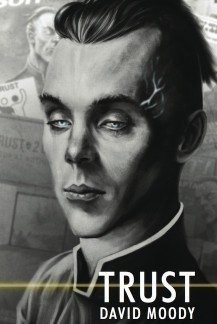
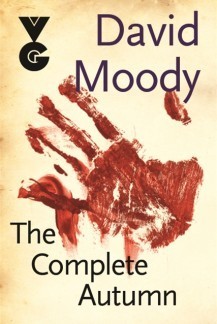
Read an ebook week is a post from: David Moody - author of the HATER and AUTUMN books
The post Read an ebook week appeared first on David Moody - author of the HATER and AUTUMN books.










